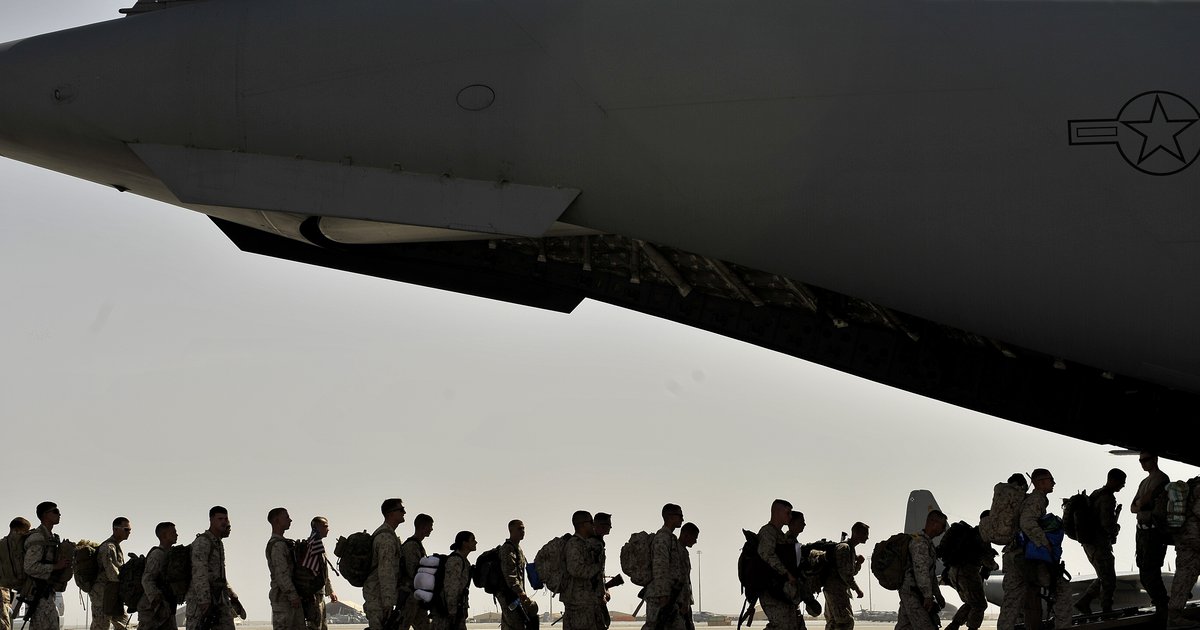
With a thriving opium-based agriculture still in place, talk of victory is hollow and won’t wash during an election campaign. This is why February’s agreement with the Taliban is so important, the need now being to present it as an acceptable deal. The reality is rather different and as things stand it looks like Trump the great deal-maker is again proving to be anything but.
Under the 29 February agreement, which was a US-Taliban deal that didn’t involve the elected Afghan government, all foreign troops will be out by next May, enabling a negotiated peace between the Taliban and the government. Formal ceasefires won’t intrude but the Taliban did agree with Washington not to allow “any of its members, other individuals, or other individuals, including al-Qaeda, to use soil of Afghanistan to threaten the security of the United States and its allies” (Gabriel Dominguez, ‘Heading for the Exit’, Janes Defence Weekly, 29 July 2020).
Troops out
Since then, the Pentagon has moved quickly. Timetables have been agreed with the Taliban and 3,400 of the 12,000 US troops have already left. Other NATO states are also involved, so the total presence of 16,000 foreign troops is already down to 12,000. There may be thousands of private military contractors still around, mainly guarding Western interests in Kabul and other cities, but that is not part of polite conversation and won’t figure in any White House announcements.
The precise rate of withdrawal from now on is not certain but the likelihood is that Trump will want to say in October that nearly half the troops are already back home, with more on the way. Given COVID-19 and all Trump’s other problems this will hardly be as significant as he hoped back in February, but it will still be a useful tool in the closing weeks of campaigning.
All, though, is not what it seems. First, the talks with Kabul that were due to start on 10 March have still not got under way. That said, after months of pre-negotiation stalemate this week were there small signs of progress as the Kabul government agreed a prisoner release and the Taliban responded with a three-day ceasefire over the Eid holiday.
Taliban in
Second, even if talks do start, the Taliban have meanwhile been engaged in a carefully calibrated campaign to undermine the Afghan government while not doing anything that might provoke the White House into reversing the withdrawal. According to last month’s Pentagon report ‘Enhancing Security and Stability in Afghanistan’, they have been avoiding direct attacks on US and other coalition forces and also high-profile attacks in city centres such as Kabul.
To the international media this gives an impression of progress, but at the same time the Taliban have been stepping up their attacks on Afghan National Defence and Security Forces (ANDSF), focusing mainly on static checkpoints that may be easy targets. With this continuing if largely hidden violence there have also been many civilian casualties, with at least 600 killed or wounded in the first six months of this year.
The Taliban strategy is therefore clear – target ANDSF personnel without antagonising the Pentagon and therefore negotiate from a position of strength with Kabul when the US and others have departed. They can then claim success so that within three or four years the Taliban will have a major share in Afghanistan’s governance, perhaps even taking back control within a decade. Trump may try to claim success but it would be anything but for Afghanistan.
tinyurlis.gdclck.ruulvis.netshrtco.de
مقالات مشابه
- اخبار GF جلو: فرودگاه مشغول ویژه عبادت خدمات نخود تحقیقات
- تبریک به ژنراتور کلاس مدرسه بالا از سال 2020!
- How Trump is opening the way for the Taliban to take Afghanistan back
- نحوه استفاده از دکانتور شیشه ای آزمایشگاهی
- شرکت صادرات و واردات کالاهای مختلف از جمله کاشی و سرامیک و ارائه دهنده خدمات ترانزیت و بارگیری دریایی و ریلی و ترخیص کالا برای کشورهای مختلف از جمله روسیه و کشورهای حوزه cis و سایر نقاط جهان - بازرگانی علی قانعی
- چرا همه در مورد چوب بیلیارد حرفه ای صحبت می کنند... حقیقت ساده فاش شد
- شرکت صادرات و واردات کالاهای مختلف از جمله کاشی و سرامیک و ارائه دهنده خدمات ترانزیت و بارگیری دریایی و ریلی و ترخیص کالا برای کشورهای مختلف از جمله روسیه و کشورهای حوزه cis و سایر نقاط جهان - بازرگانی علی قانعی
- بدن تجزیه سوار-نقطه موتور سیکلت برنامه مدیر عامل موجود در نیویورک محل سکونت لوکس
- You will از ما متشکریم - 10 نکته در مورد مواد شیمیایی میخواهی بدانی
- درگاه: از آنجا که پاداش کارکنان دولت با متوسط شایستگی جایزه یک چیز بد است ؟